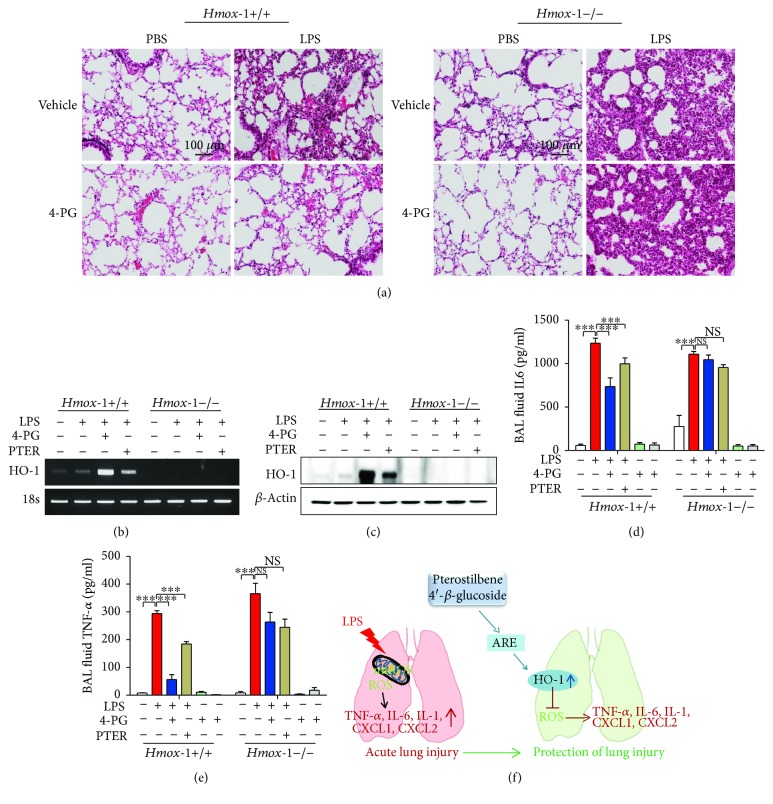Figure 6.
HO-1 deficiency abolished the anti-inflammatory effect of 4-PG in a mouse model of acute lung injury. 10-week-old Hmox-1+/+ and Hmox-1−/− mice were injected with 4-PG (10 mg/kg, i.p.) and PTER (10 mg/kg, i.p) for 4 days prior to intranasal administration of LPS (2.5 mg/kg) for 24 h. (a) Lung sections were stained with hematoxylin and eosin (H&E) for morphological evaluation, and the representative lung sections of each group are shown. Scale bar = 100 μm. The mRNA and protein levels of HO-1 from lung tissues were determined by RT-PCR (b) and Western blotting (c), respectively. BAL fluid was recovered after 24 h stimulation of LPS, and secreted levels of IL-6 (d) and TNF-α (e) in BAL fluid were measured by ELISA. (f) Schematic diagram of proposed pathways. 4-PG has the protective and therapeutic effects in LPS-induced ALI by increasing HO-1 expression and reducing oxidative stress. Data were expressed as mean ± SD (n = 5 per group); ∗∗∗p < 0.001. NS: not significant. Comparisons between genotypes at HO-1 were made by two-way ANOVA with Bonferroni post-tests.

